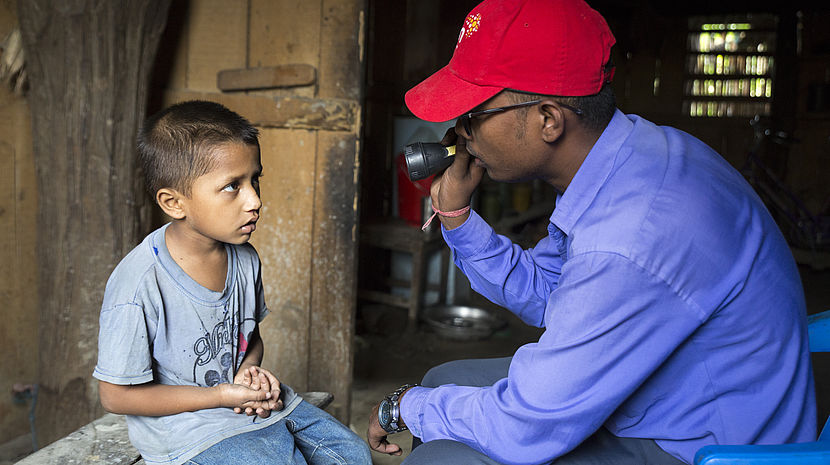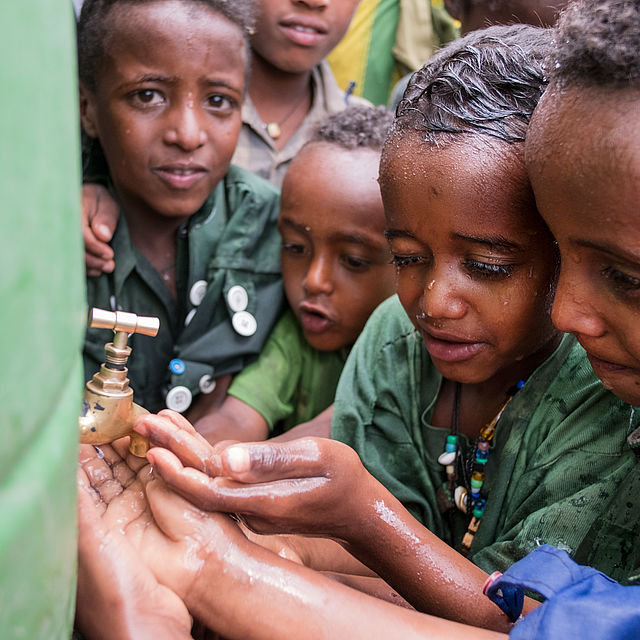Ensuring Equity in Eye Care Through Innovation

6-year old Adip had bilateral cataract and underwent surgery at CBM Partner Biratnagar Eye Hospital in Nepal in 2019. Here, BEH field staff Sunil is assessing Adip’s sight before intervention.
© CBM
In this article, Devex speaks to CBM Director of Inclusive Eye Health and Neglected Tropical Diseases Dr. Babar Qureshi about how CBM is working with partners to expand access to quality eye care in the 35 countries where we operate.
Globally, at least 2.2 billion people have a vision impairment — more than 1 billion of which could have been prevented with access to adequate eye care, according to the World Health Organization’s 2019 “World report on vision.”
Right now, the burden of poor eye health falls unequally on low-income countries and underserved populations, including people in rural areas, women, older populations, people with disabilities, ethnic minorities, and indigenous communities, according to the WHO report.
The first "Inclusive Eye Health Report" released by CBM in December 2020, highlights that while the global Global Vision 2020 initiative for the elimination of avoidable blindness has helped, more needs to be done to ensure equitable access to eye care, especially as global demand is predicted to surge in the coming years as a result of population growth, aging, and lifestyle changes.
Access the DEVEX interview

How is CBM working with partners to expand access to quality eye care in the 35 countries where we operate?
Read more here.